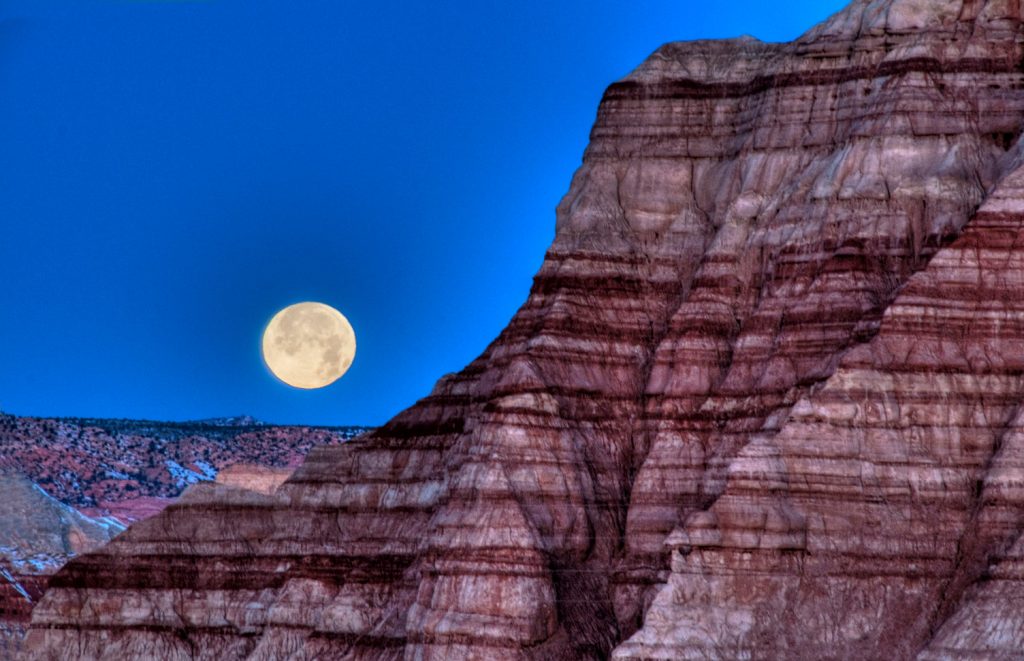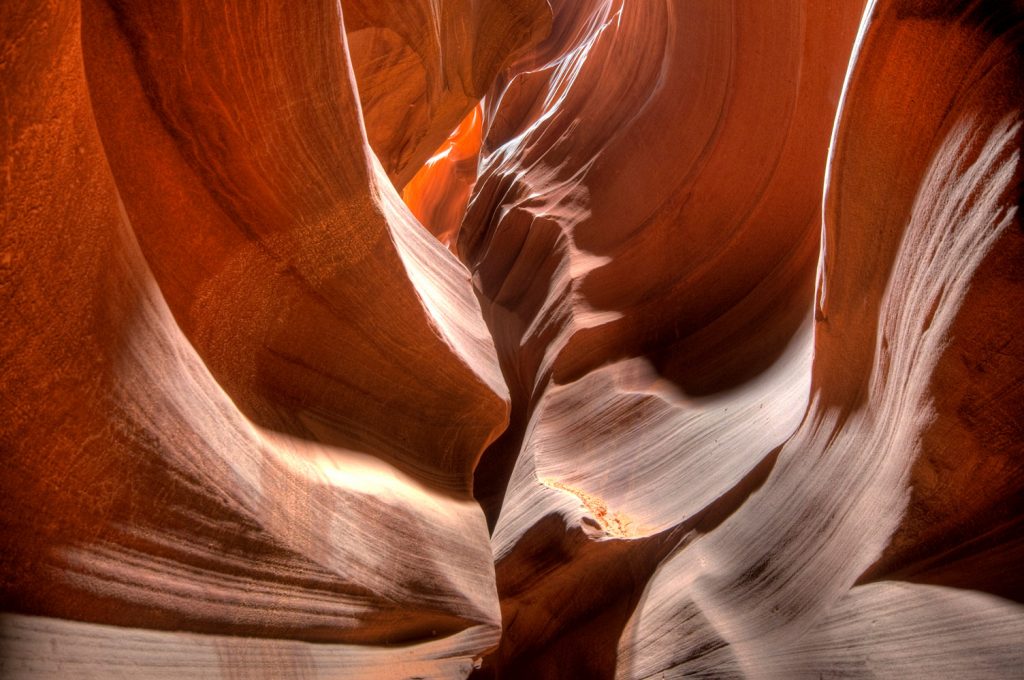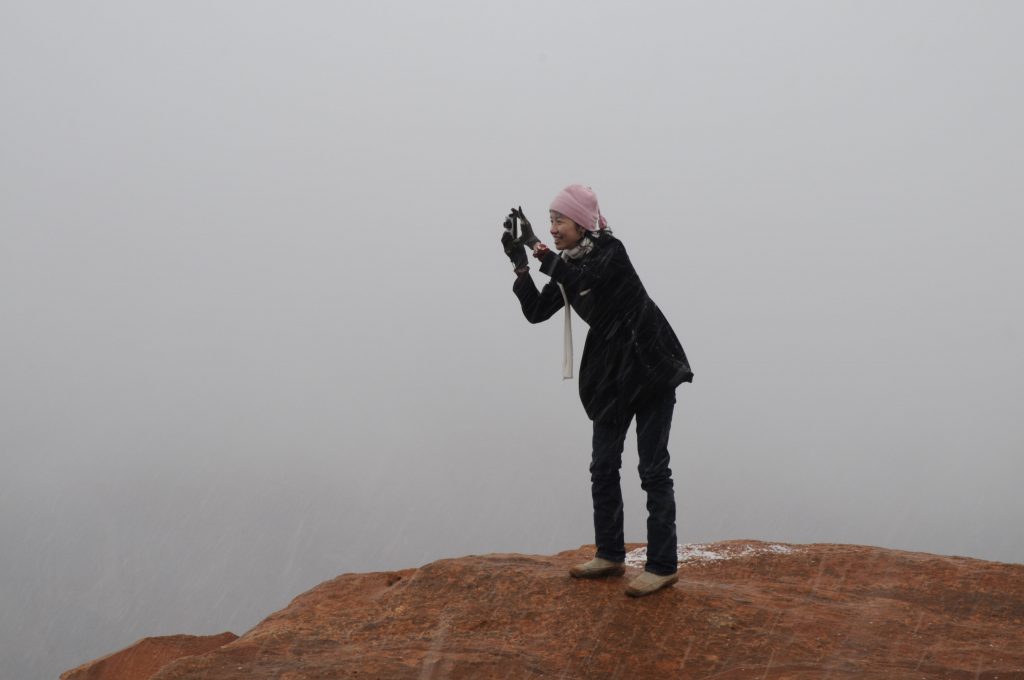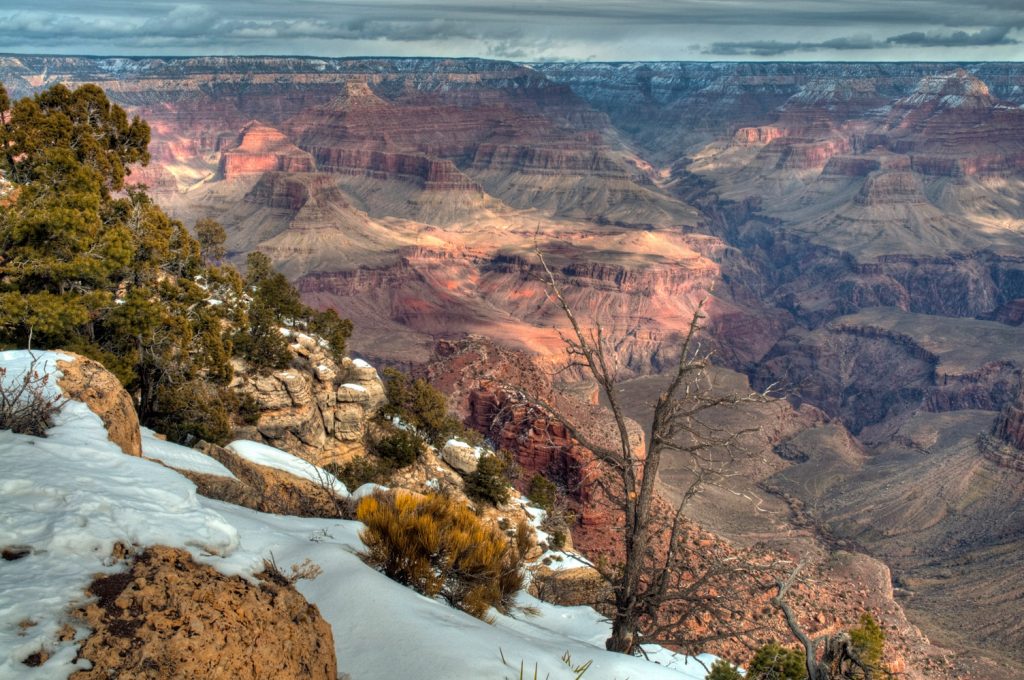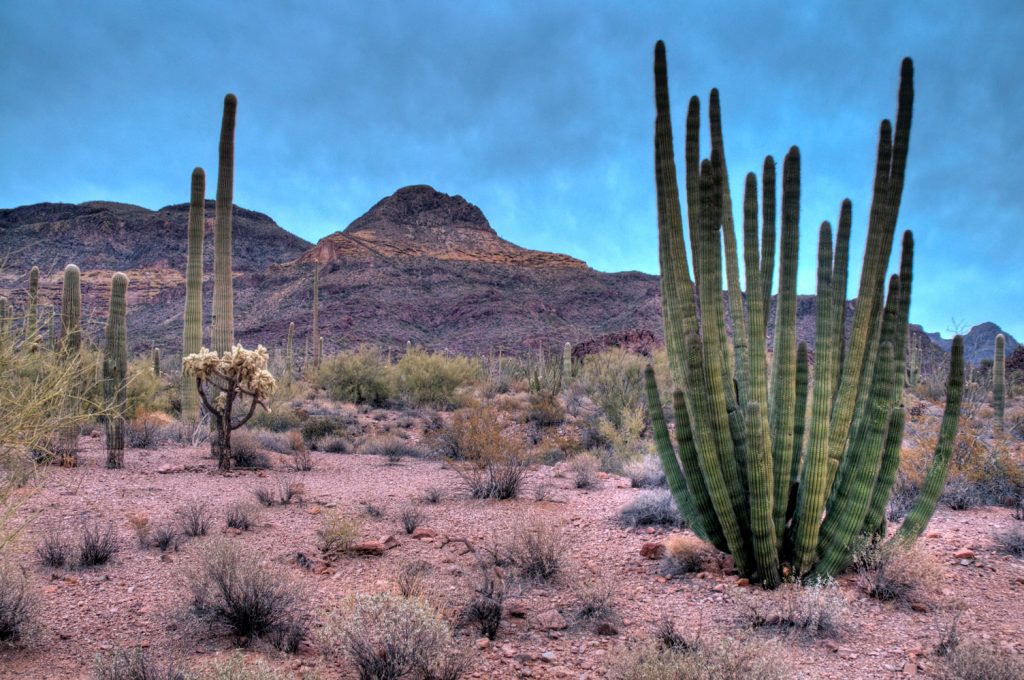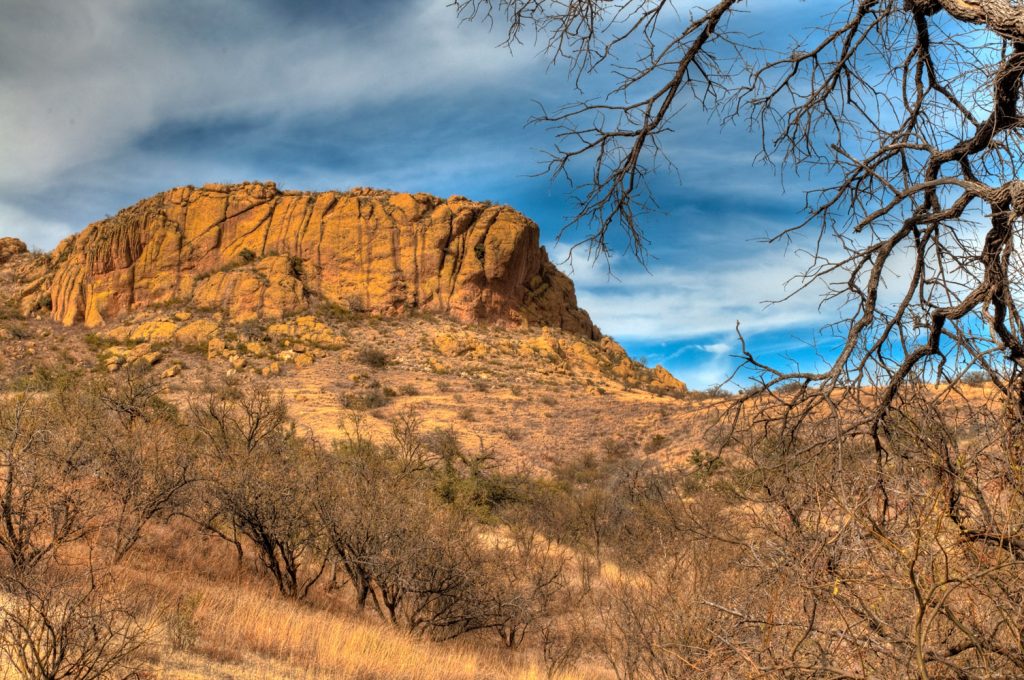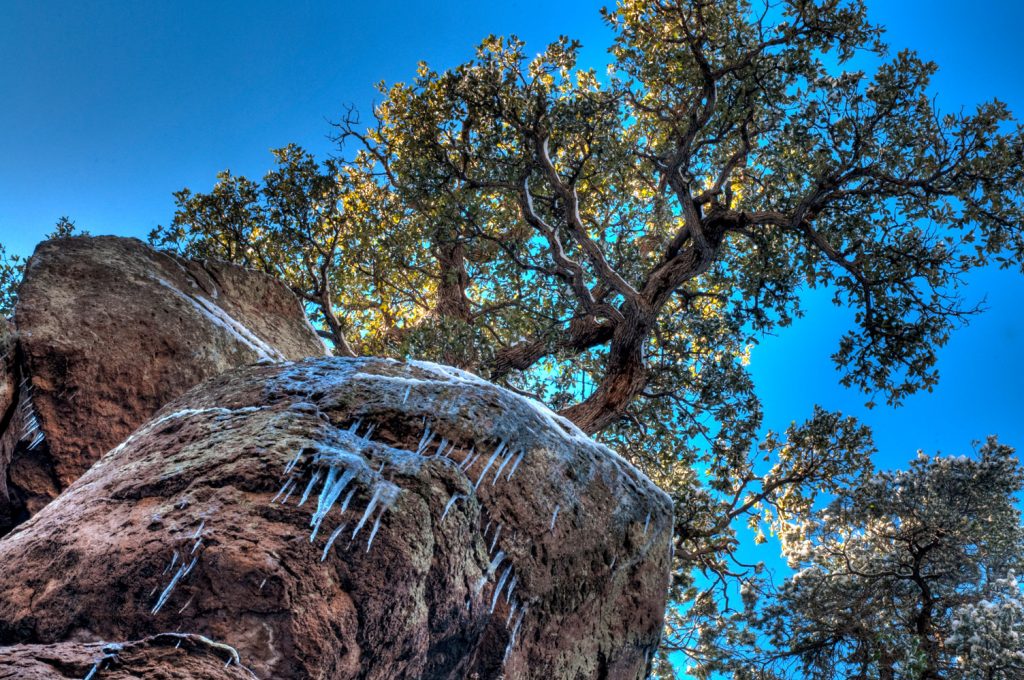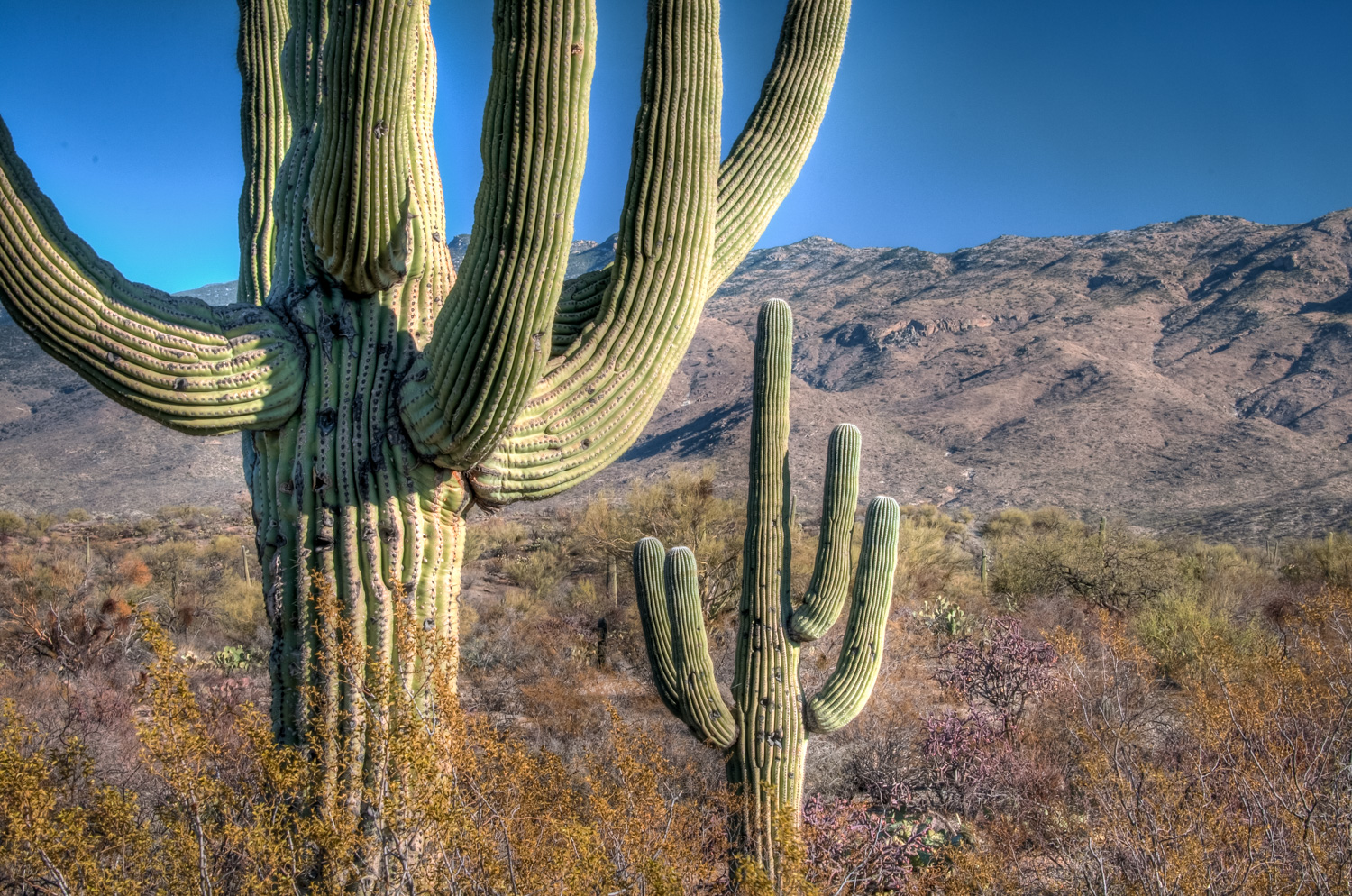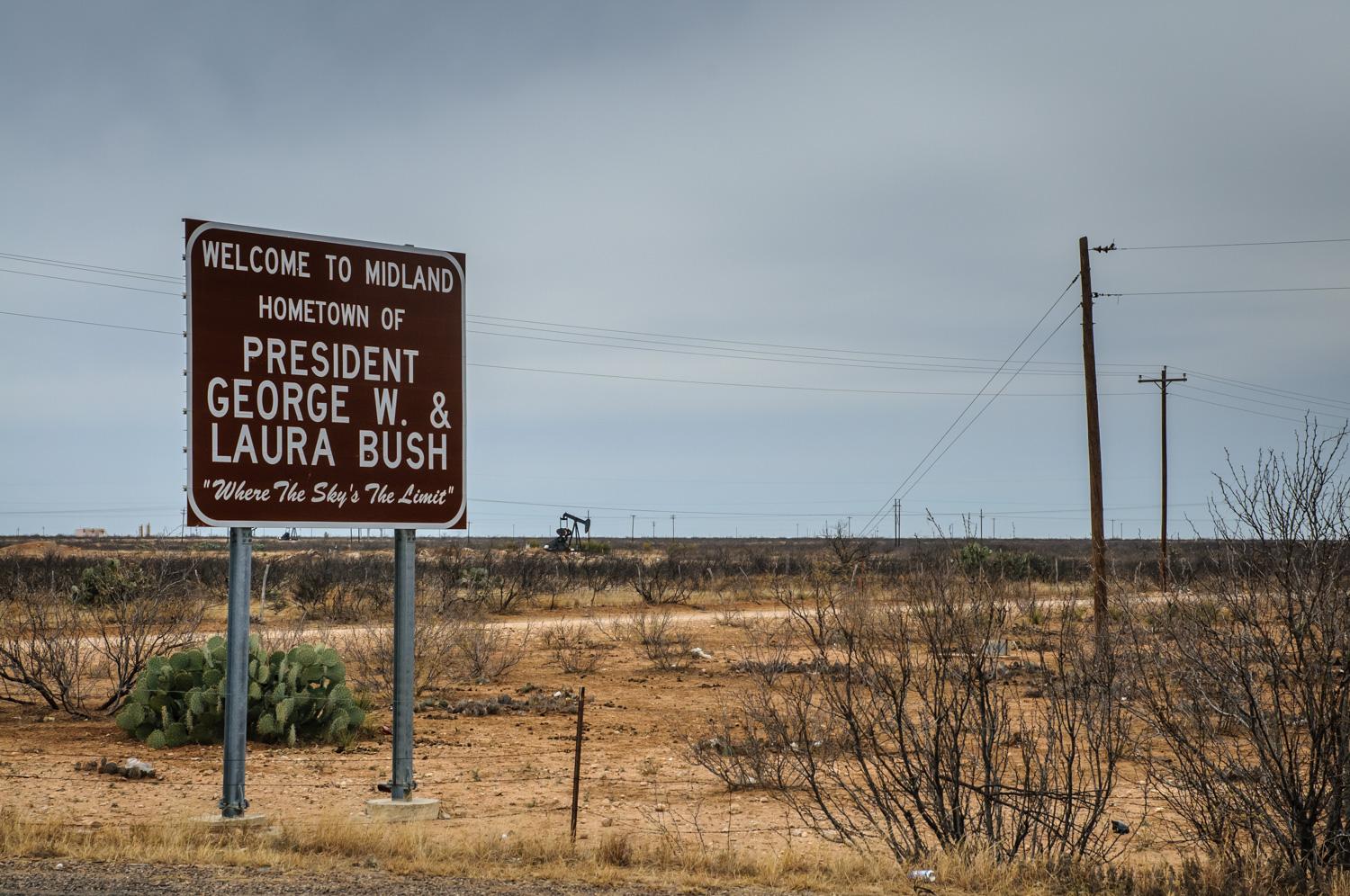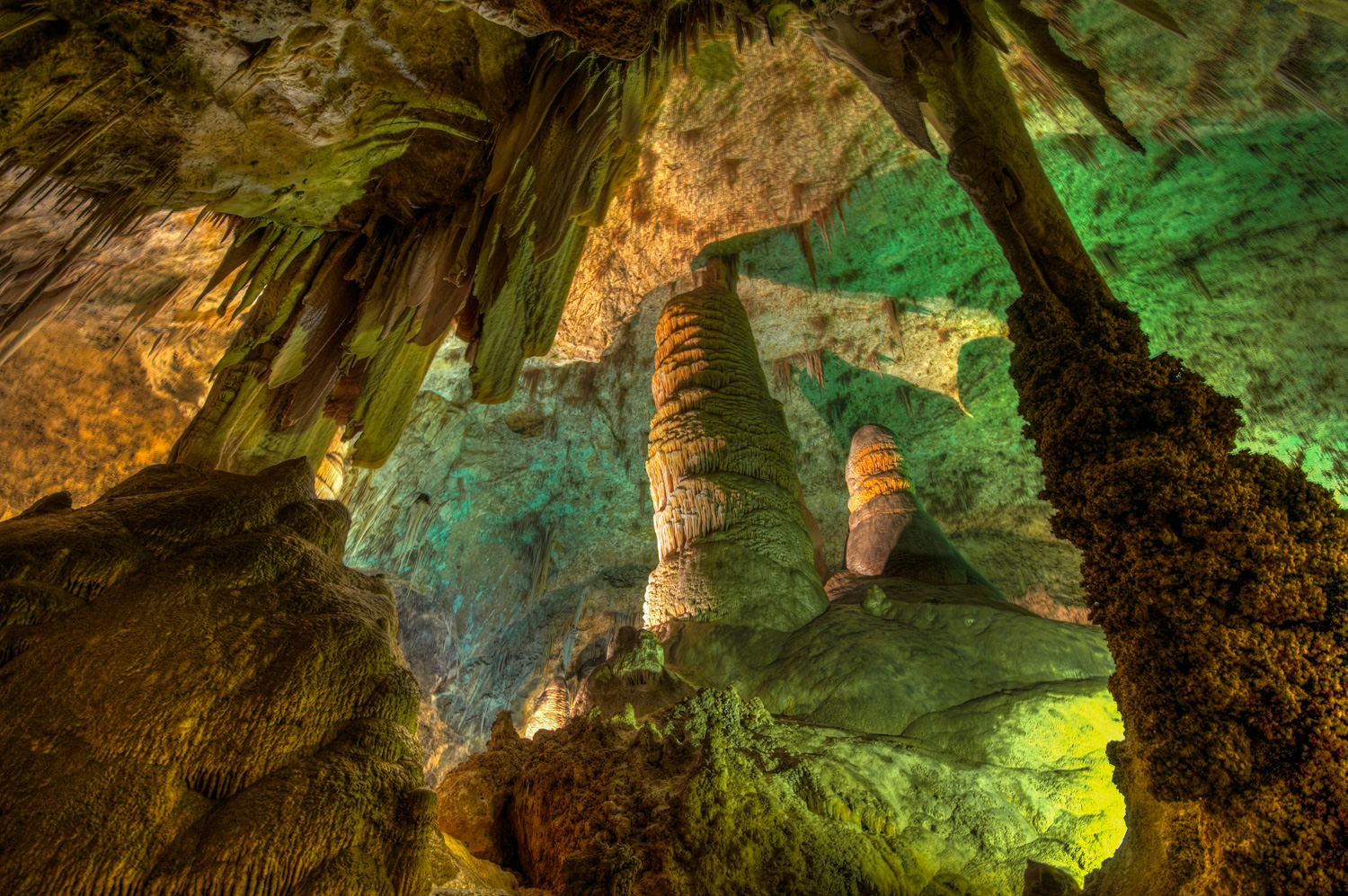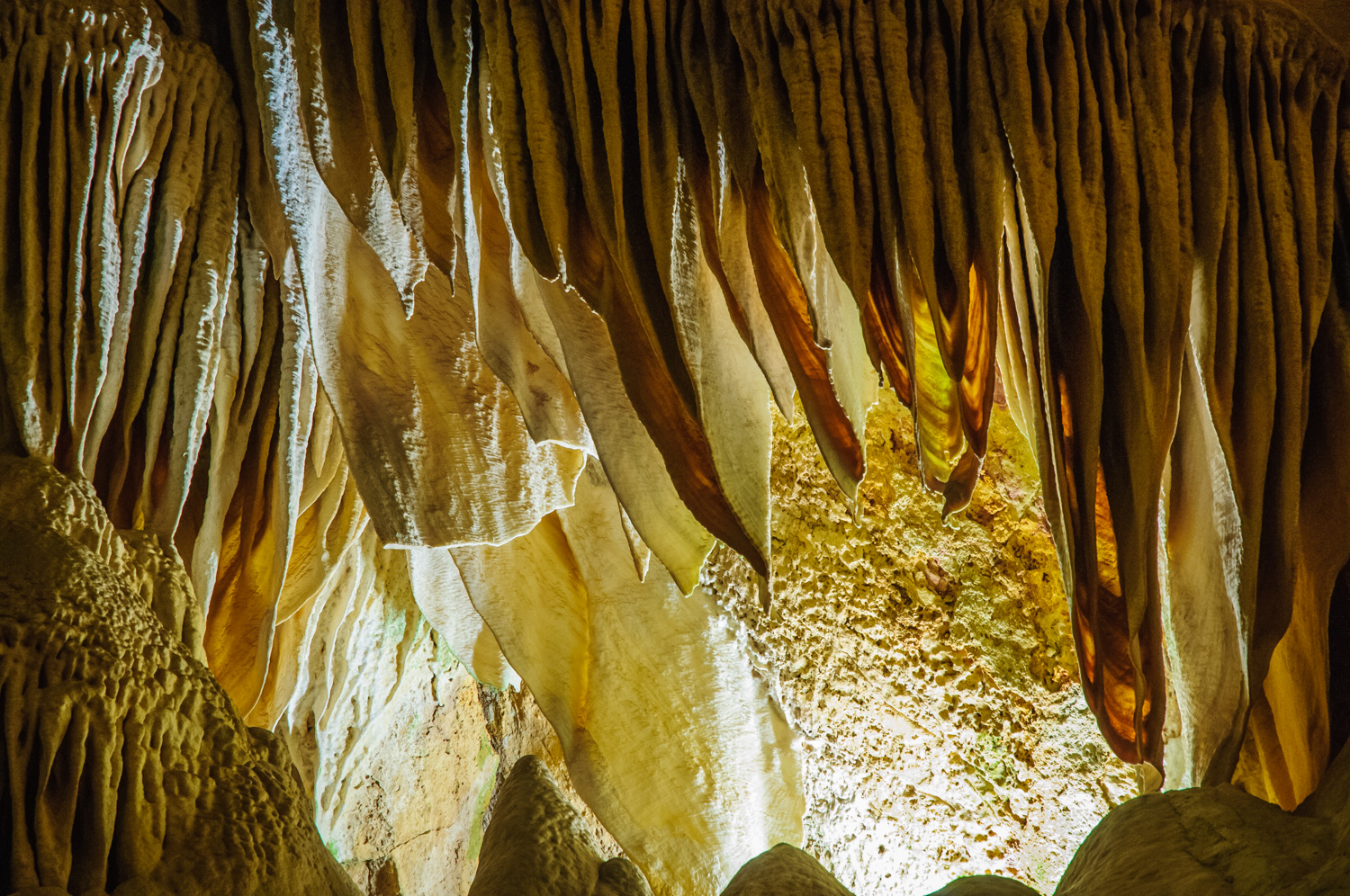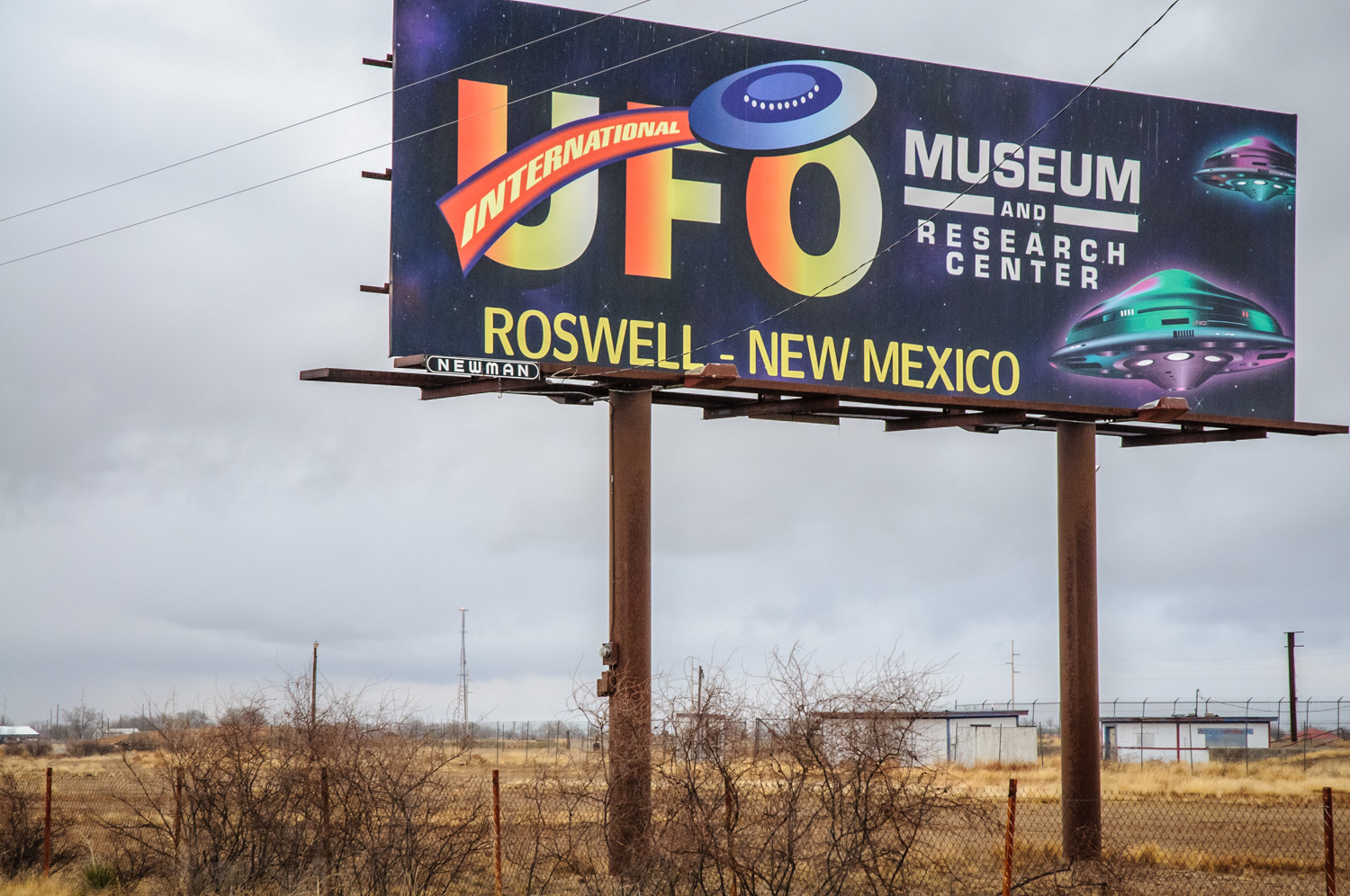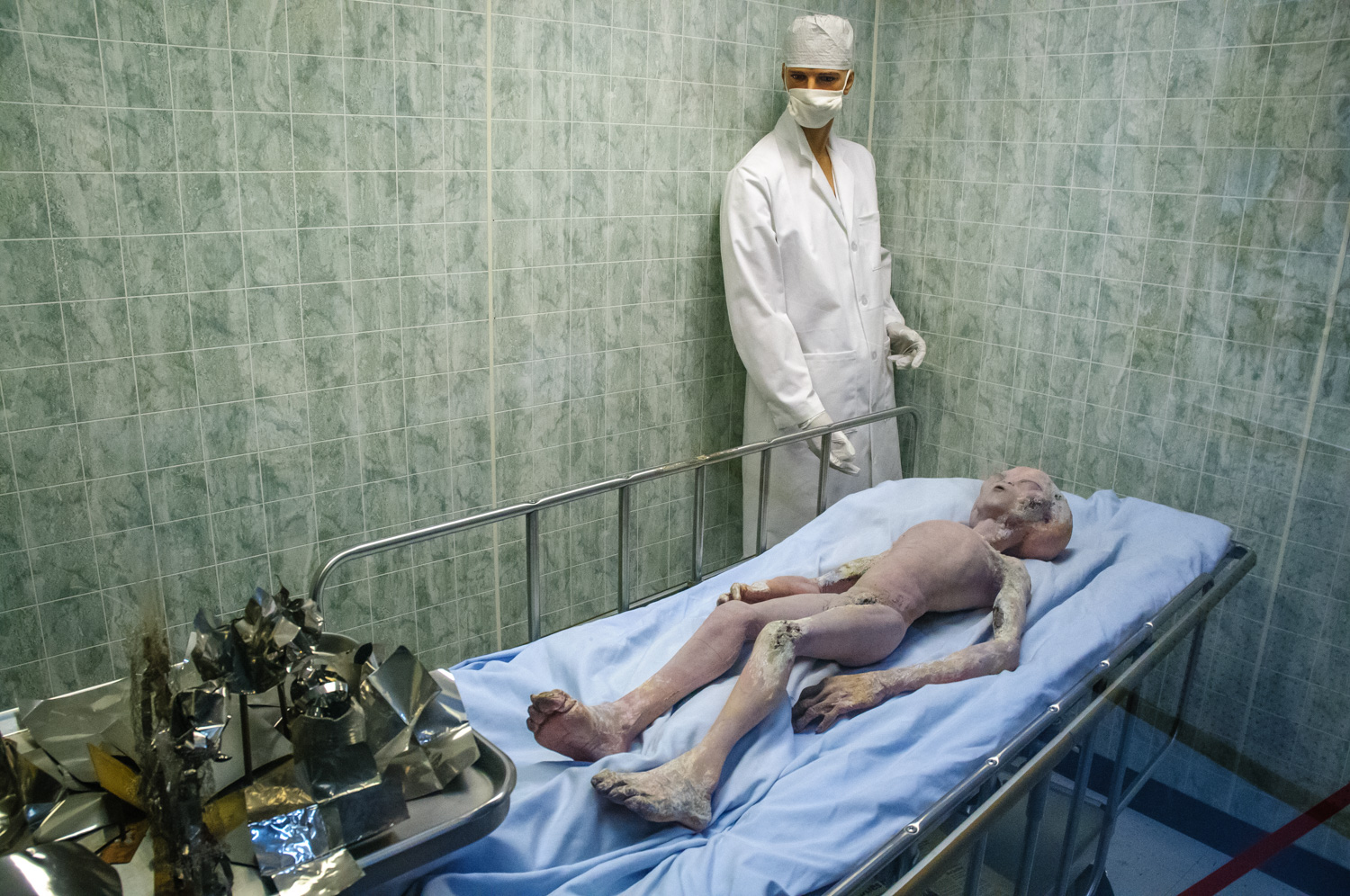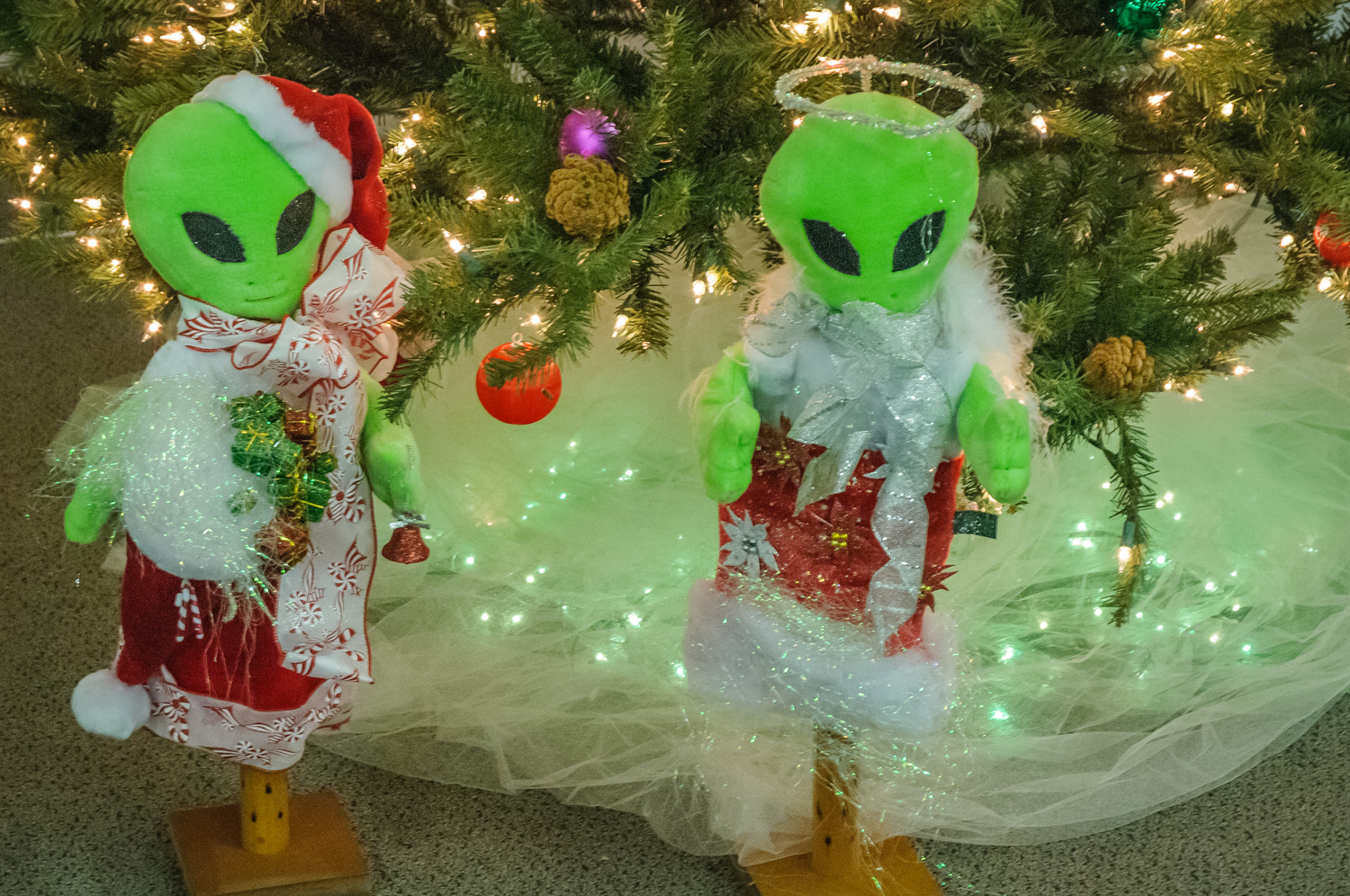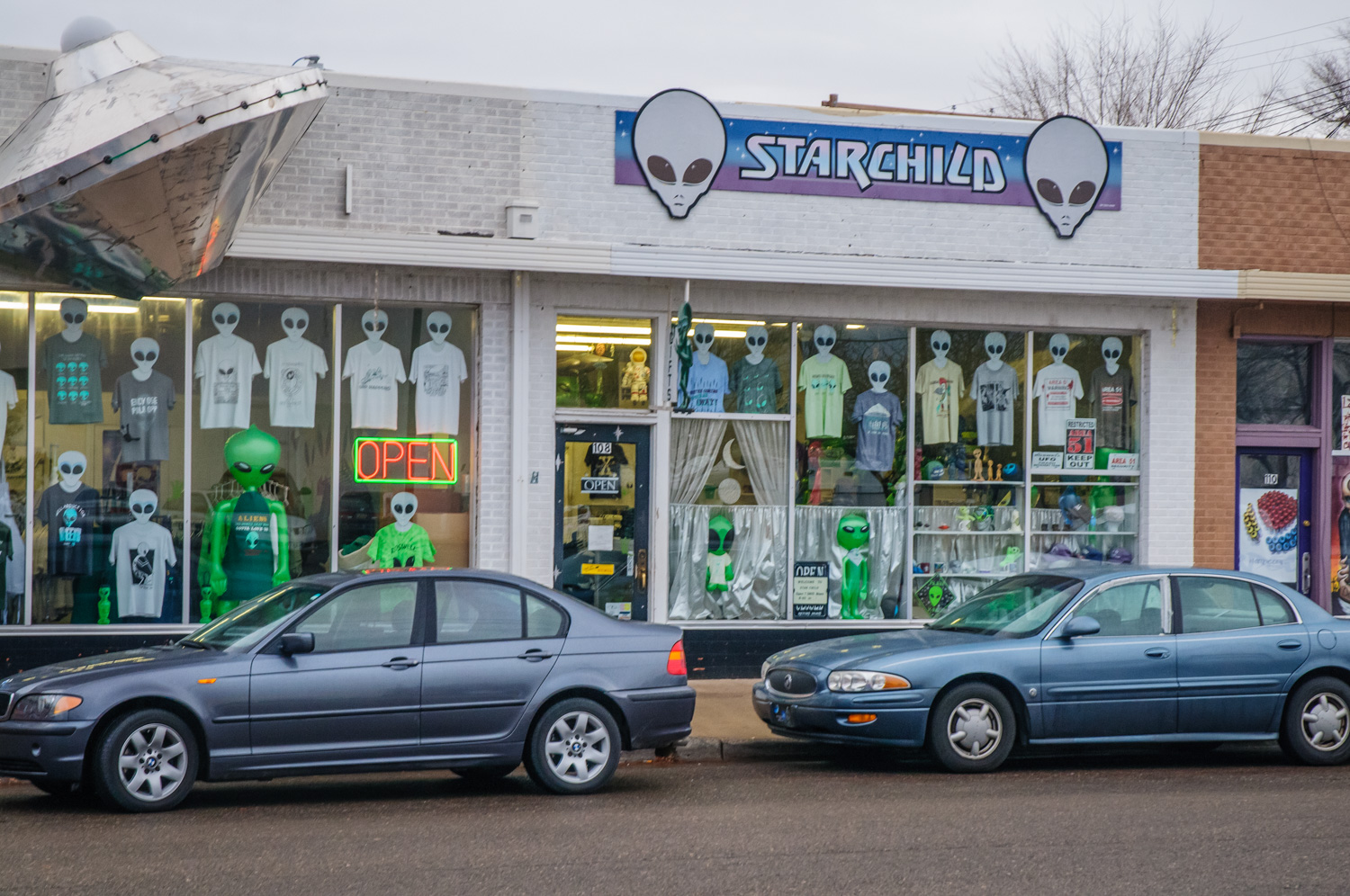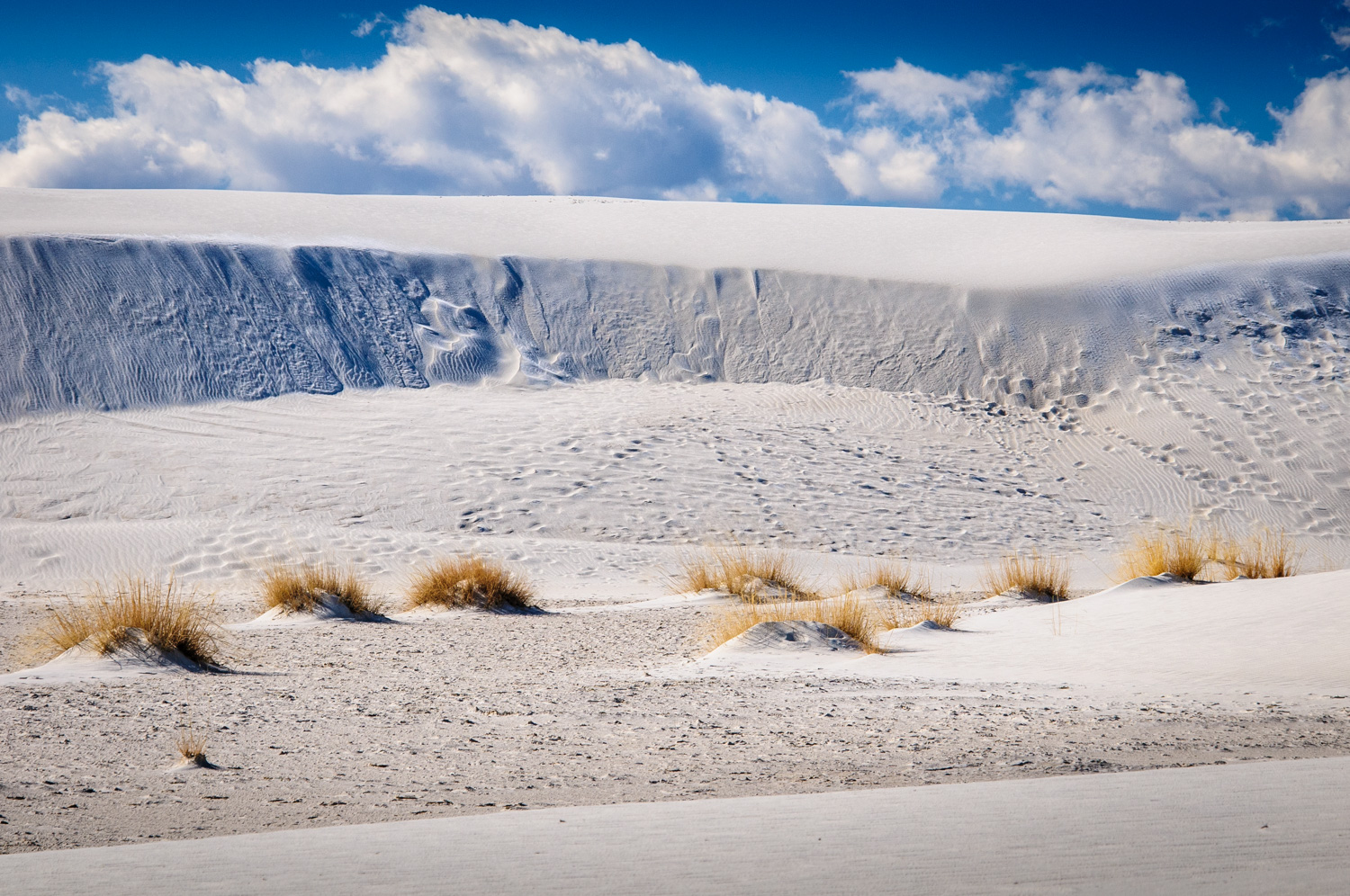Friday, January 1, 2010 (New Year’s Day)
On New Year’s Day, I set out to visit two wonderful national parks near Moab — Canyonlands National Park and Arches National Park. I drove to Canyonlands first and as I approached it, I drove into pockets of fog alternating with clear areas of sunshine. The hoarfrost clung to the bushes and trees. It was still dark as I drove to the park, but the sky began to get lighter. It was a cold crisp day, eventually with blue sky, and it turned out to be one of the best days of my trip for photography.
One of the classic photo spots in Canyonlands is Mesa Arch, a stone arch on the edge of the cliff that catches the sunlight at sunrise. It’s about a half-mile hike over a hill, and I trudged up with my tripod and camera along the well trodden path through the snow. When I arrived there were about five or six other photographers already there with their cameras and tripods set up. The sun was just starting to rise, but the valley below was full of fog. It was a beautiful sight. On the one hand, it was disappointing that you could not see any details in the valley, but on the other the fog gave it a wonderful mood in the warm sunlight. For a few minutes I shot some great pictures of the arch and the nearby cliffs in the sunlight and surrounded by fog. Before very long though, the fog rose and we were engulfed in it. A few other photographers straggled up later and were disappointed to see nothing. Some hung around, and others left. I stayed a while and got a few more shots when the fog cleared, but none as good as those first few. I then returned to my car through thick fog with an eerie sun trying to burst through.
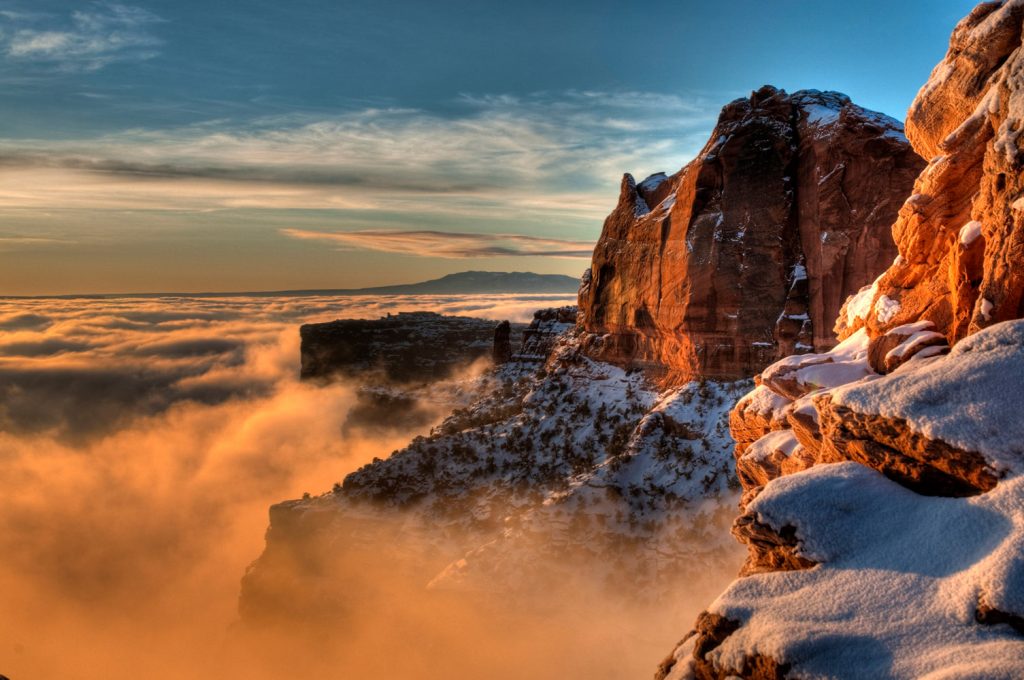
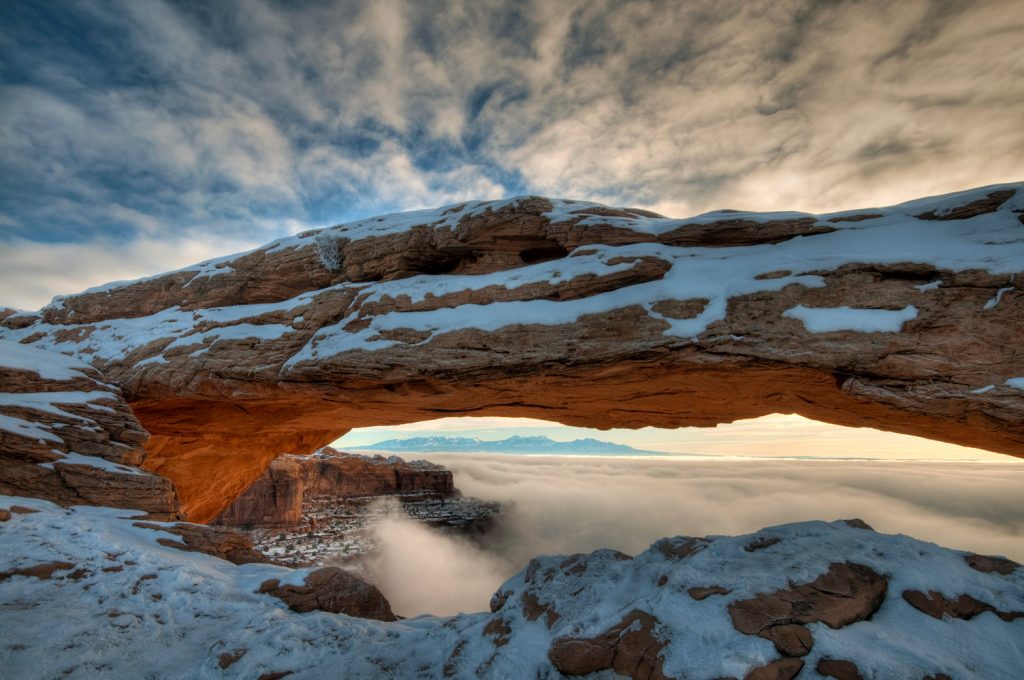
I drove to several other lookout points and trails to the number of pictures of the fog, the snow and the cliffs. It was cold and crisp, but incredibly beautiful.
The fog hung around well into the afternoon, so I decided to forgo a visit to Dead Horse State Park, which has a beautiful view of the river, but it would have been completely fogged in. Instead I returned to Moab and then set out for Arches National Park, which is quite near.
I had learned that it’s possible to buy an $80 annual pass for all the national parks and monuments, which would have been a better deal than paying individually at each park. This is especially true since many of the more expensive parks are $25 or $20 each. Fortunately, I also learned that if I had kept my receipts I could trade them in towards an annual pass. Being the pack rat is one, I had of course kept my receipts, and that Arches I traded them in for about $55 towards the $80 pass. It was a smart move because the individual admissions by the time I finished my trip would have been well over $100, and now I have an annual pass that the good for any visit I might do to the US in the next year.
Arches National Park had many more people than Canyonlands, but it still wasn’t overly crowded. Its land formations in sandstone were incredible — not just arches, but hoodoos, protruding rocks, and many various shapes. In fact, it was certainly among the more spectacular parks of my trip. It’s quite high up, so there was a fair bit of snow. I didn’t do any long hikes, given the time, but I did some short walks and drove between various pull off spots to photograph the great vistas.
One of the more popular arches is called Delicate Arch, but it involves a steep hike of a couple hours return to get close to it. It was by now past 3 PM, so I opted instead to take a shorter hike to a viewpoint where you can see the arch in the distance from below. This provided some great views, and still left me time to see other parts of the park.
The Fiery Furnace is a spectacular area of rock formations with canyons and fins. You need a hiking permit to visit it, or you can book ahead to take a ranger guided tour. As I had neither, I had to be content to look down on it from the parking area. It was still spectacular with snow scattered across the red sandstone fins.
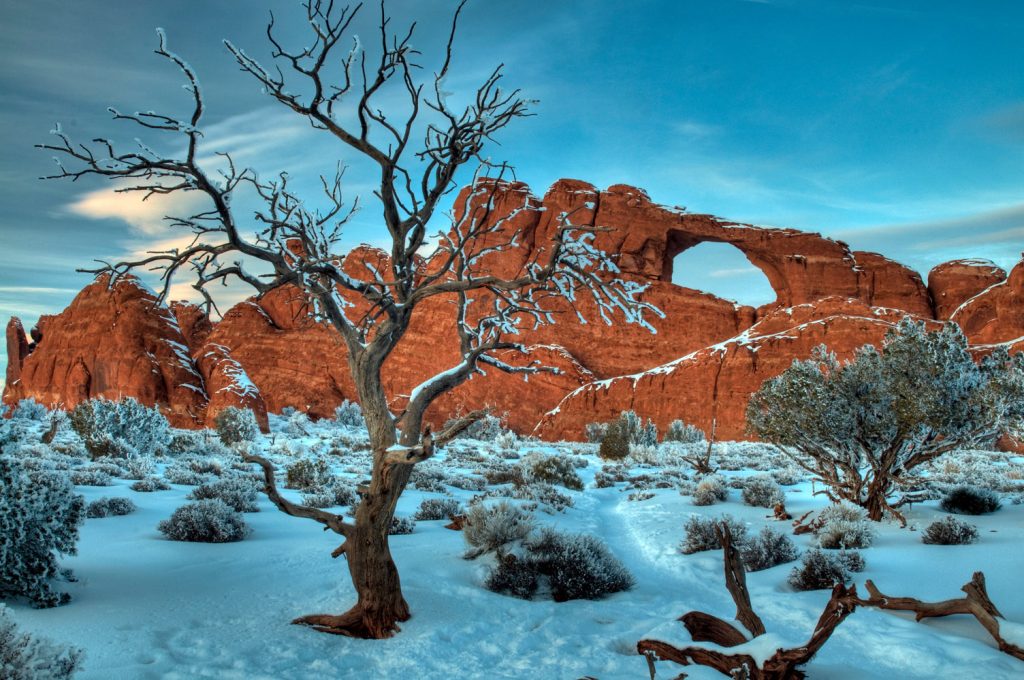
Lastly, as the sun went down, I took a short hike to the base of Skyline Arch, a massive arch in a cliff. In the dusk, the light was blue and it looked great with the snow, the red land formations and silhouetted trees. Here I also shot several nice pictures, as I struggled to keep my hands warm.
